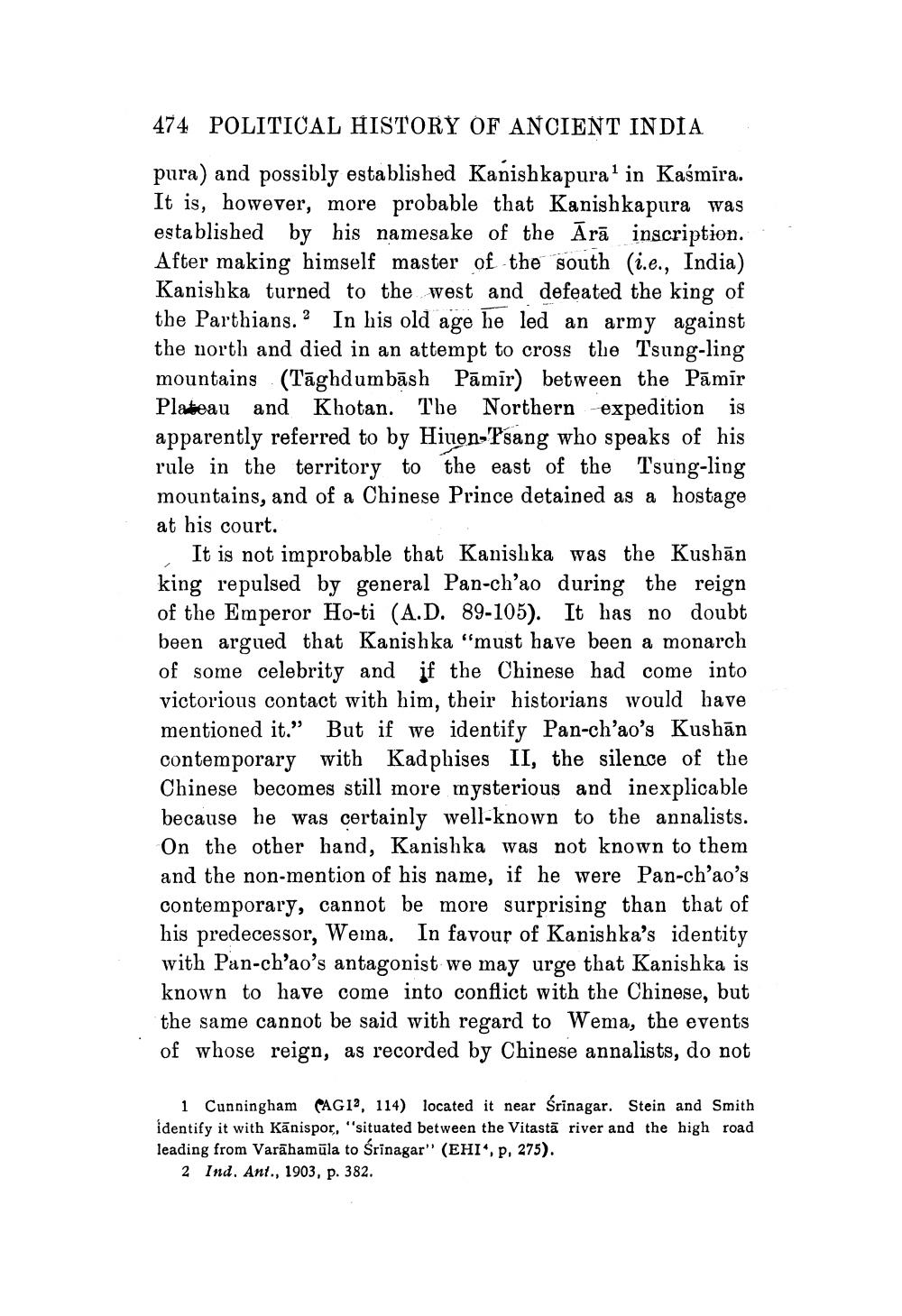________________
474 POLITICAL HISTORY OF ANCIENT INDIA
pura) and possibly established Kanishkapura1 in Kasmira. It is, however, more probable that Kanishkapura was established by his namesake of the Ara inscription. After making himself master of the south (i.e., India) Kanishka turned to the west and defeated the king of the Parthians. 2 In his old age he led an army against the north and died in an attempt to cross the Tsung-ling mountains (Taghdumbash Pamir) between the Pamir Plateau and Khotan. The Northern expedition is apparently referred to by Hiuen-Tsang who speaks of his rule in the territory to the east of the Tsung-ling mountains, and of a Chinese Prince detained as a hostage at his court.
It is not improbable that Kanishka was the Kushan king repulsed by general Pan-ch'ao during the reign of the Emperor Ho-ti (A.D. 89-105). It has no doubt been argued that Kanishka "must have been a monarch of some celebrity and if the Chinese had come into victorious contact with him, their historians would have mentioned it." But if we identify Pan-ch'ao's Kushan contemporary with Kadphises II, the silence of the Chinese becomes still more mysterious and inexplicable because he was certainly well-known to the annalists. On the other hand, Kanishka was not known to them and the non-mention of his name, if he were Pan-ch'ao's contemporary, cannot be more surprising than that of his predecessor, Wema. In favour of Kanishka's identity with Pan-ch'ao's antagonist we may urge that Kanishka is known to have come into conflict with the Chinese, but the same cannot be said with regard to Wema, the events of whose reign, as recorded by Chinese annalists, do not
1 Cunningham (AG12, 114) located it near Srinagar. Stein and Smith identify it with Kanispor, "situated between the Vitasta river and the high road. leading from Varahamula to Śrinagar" (EHI*, p, 275).
2 Ind. Ant., 1903, p. 382.




